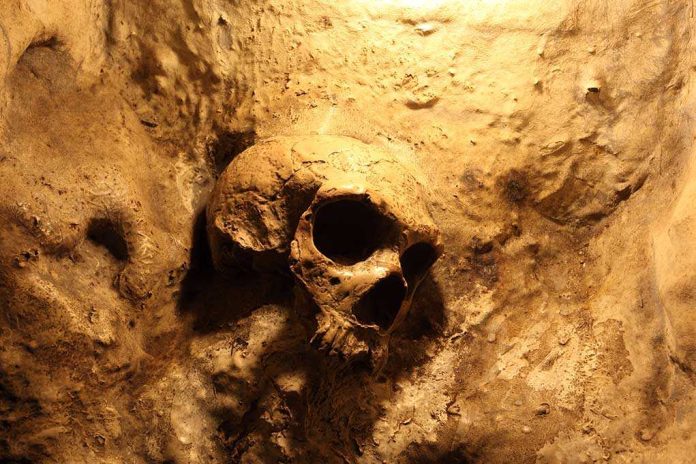
The discovery of the “Dragon Man” skull in China challenges the timeline of human evolution, sparking scientific debate and reshaping our understanding of history.
Story Snapshot
- The “Dragon Man” skull suggests a new sister lineage to Homo sapiens.
- Analysis implies human evolutionary split occurred 500,000 years earlier.
- Findings shift focus to East Asia’s role in human evolution.
- Ongoing debates on classification and evolutionary significance.
Discovery of the Dragon Man Skull
In northeastern China, a remarkable discovery has emerged that could alter the established narrative of human evolution. The well-preserved skull, nicknamed “Dragon Man,” is believed to represent a previously unknown sister lineage to Homo sapiens. Initial analysis suggests that this lineage diverged from modern humans significantly earlier than previously thought, possibly half a million years earlier. This finding challenges long-held timelines and highlights the increasing importance of East Asia in our understanding of human origins.
The skull’s unique combination of archaic and modern features has captivated scientists worldwide. It was discovered in a region known for significant Pleistocene hominin fossils, including Denisovan remains. The Dragon Man’s size and preservation have provided a wealth of data, allowing researchers to challenge established models of human evolution and push back the divergence date between Homo sapiens and other archaic humans.
Scientific and Global Implications
Researchers assert that this discovery could lead to a significant reevaluation of evolutionary models. The Natural History Museum in the UK has reported that the findings may push back the origin of our species’ lineage by half a million years, igniting intense scientific debate. This revelation has heightened interest in East Asian fossil sites, where further discoveries could provide additional insights into our evolutionary past.
The implications are far-reaching, with potential changes in scientific curricula and increased focus on East Asian paleoanthropological research. The discovery promises to fuel ongoing debates and further explorations, as scientists work to understand the precise classification of the Dragon Man skull and its place in the human family tree.
Ongoing Research and Debate
As more data emerges, the scientific community remains divided over the classification and evolutionary significance of the Dragon Man skull. Some experts embrace the idea of a new sister lineage, while others urge caution pending further evidence. The skull is undergoing additional analysis, including potential genetic testing, to confirm its classification and relationship to other hominins.
Continued fieldwork in China aims to uncover more fossils and contextual evidence, promising a broader understanding of human diversity and evolution. The Dragon Man discovery not only reshapes the past but also opens new avenues for future research and exploration.













